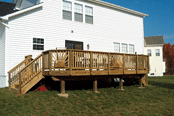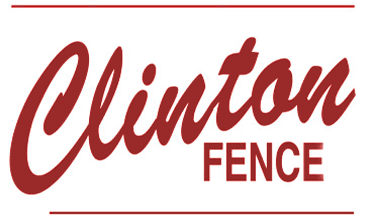Prioritize safety when power washing
Prioritize safety when power washing your deck, fences, and patios.
 Pressure washers have various levels of power. Some may be effective for washing cars, while stronger settings are often most effective at cleaning home siding.
Pressure washers have various levels of power. Some may be effective for washing cars, while stronger settings are often most effective at cleaning home siding.Patios, decks and outdoor entertaining areas often need some TLC. Homeowners looking forward to enjoying the warm air again often start their annual chore of readying such areas for the entertaining season in the spring, and cleaning outdoor furniture and entertaining areas is a big part of that process. Very often individuals turn to pressure washing machines to clean such areas; while pressure and power washers are effective, they also can be dangerous if homeowners don’t prioritize safety when operating these machines.
Pressure washing machines come in many varieties, and not all are created equal. Smaller, electric-powered systems may be effective for cars and boats but ineffective at cleaning grime on a house or driveway. Pressure washers also may have hot or cold water supplies. Hot water can help cleaning detergents emulsify dirt faster and more effectively than cold water. The cleaning capacity of these machines is measured in cleaning units — or the water pressure multiplied by the flow rate. The higher the cleaning units, the greater the cleaning power of the device. But more powerful tools also carry a greater safety risk, highlighting the importance users must place on safety when operating such machines. The following are a few safety tips homeowners can employ to ensure their next power washing project goes off without a hitch.
* Clear away furniture and any obstacles from the area where you will be cleaning. You want the area to be free of tripping hazards or items that can be damaged by the spray.
* Keep children and pets away from the area while the cleaning is taking place. Pressure washers are powerful, and highly pressurized water spray can cause injuries. Slips and falls on wet surfaces may occur, and high-pressure injection can happen when water and chemicals penetrate the skin and cause tissue damage.
* Eye and ear protection should be worn at all times when working with a pressure washer.
* Many pressure washers work better when used in conjunction with some type of cleaning solution. A combination of bleach and water will help loosen dirt and will require less pressure from the washer.
* As you grow accustomed to the power of the washer, it is best to adjust the nozzle to a wide angle fan and the lowest pressure setting to see how effectively it cleans a given surface. Increase pressure accordingly as the project progresses. Making the water stream too narrow could cause damage. It takes time to learn the subtleties of the machine, so users should allow themselves ample time to grow comfortable with the machine.
* Keep the pressure wand 10 to 12 inches away from the surface that needs cleaning. Make small passes and check the cleaned area, adjusting the pressure and stream accordingly.
* Begin in the farthest corner of a deck, driveway or patio and the highest spot of a home. Use slow, even sweeps with the pressure wand, being careful to maintain an equal distance from the tip to the work surface. This helps to ensure even cleaning and reduces the chances of streaks and overlapping of the pressure spray.
* When working on a home, avoid spraying the water at a steep angle under siding or directly into corners. Do not spray under the edges of window or doors. Use caution around dryer and attic vents as well. You may end up soaking the inside of the home or cause water damage unwittingly.
* Always use caution when operating a pressure washer while on a ladder. The power of the device can easily compromise your balance.
If ever you feel uncomfortable using the pressure washer, stop and consider hiring a professional. It is much better to make that investment rather than damage your home or risk injury.
